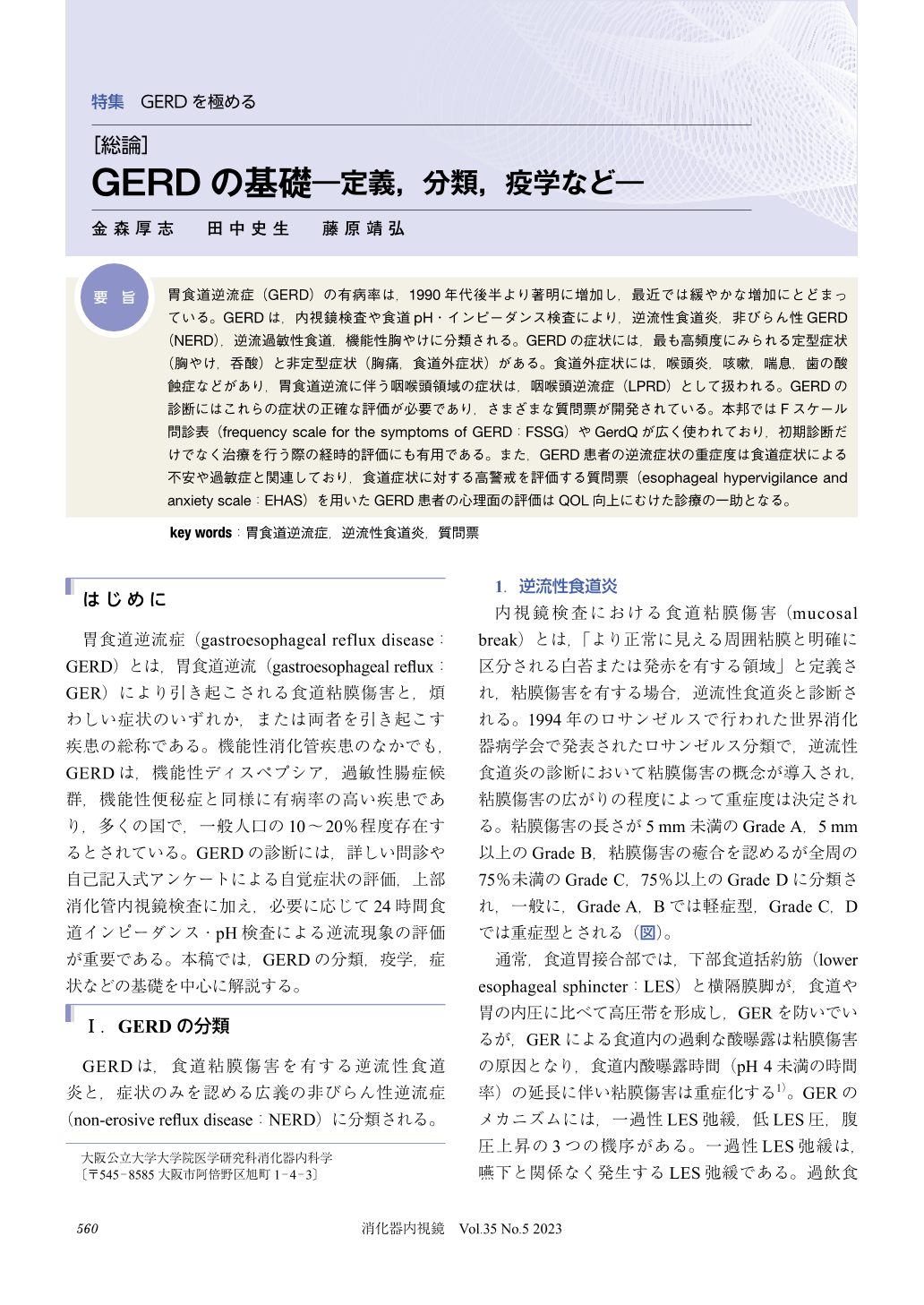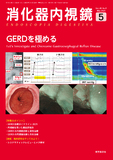Japanese
English
- 有料閲覧
- Abstract 文献概要
- 1ページ目 Look Inside
- 参考文献 Reference
要旨
胃食道逆流症(GERD)の有病率は,1990年代後半より著明に増加し,最近では緩やかな増加にとどまっている。GERDは,内視鏡検査や食道pH・インピーダンス検査により,逆流性食道炎,非びらん性GERD(NERD),逆流過敏性食道,機能性胸やけに分類される。GERDの症状には,最も高頻度にみられる定型症状(胸やけ,呑酸)と非定型症状(胸痛,食道外症状)がある。食道外症状には,喉頭炎,咳嗽,喘息,歯の酸蝕症などがあり,胃食道逆流に伴う咽喉頭領域の症状は,咽喉頭逆流症(LPRD)として扱われる。GERDの診断にはこれらの症状の正確な評価が必要であり,さまざまな質問票が開発されている。本邦ではFスケール問診表(frequency scale for the symptoms of GERD:FSSG)やGerdQが広く使われており,初期診断だけでなく治療を行う際の経時的評価にも有用である。また,GERD患者の逆流症状の重症度は食道症状による不安や過敏症と関連しており,食道症状に対する高警戒を評価する質問票(esophageal hypervigilance and anxiety scale:EHAS)を用いたGERD患者の心理面の評価はQOL向上にむけた診療の一助となる。
The prevalence of gastroesophageal reflux disease (GERD) has increased markedly since the end of 1990s, with only a modest increase in recent years. GERD is classified by endoscopy and pH-impedance monitoring as reflux esophagitis, non-erosive GERD (NERD), reflux hypersensitivity, or functional heartburn. Symptoms of GERD include the most frequent typical symptoms (heartburn, regurgitation) and atypical symptoms (chest pain, extra-esophageal symptoms). Extra-esophageal symptoms include laryngitis, cough, bronchial asthma, and dental erosion. The symptoms in the pharyngeal region associated with gastroesophageal reflux are treated as laryngopharyngeal reflux disease (LPRD). GERD is diagnosed by an accurate assessment of these symptoms, and various questionnaires have been developed. The FSSG and GerdQ are widely used in Japan and are useful not only for initial diagnosis but also for longitudinal evaluation during treatment. In addition, the severity of GERD symptoms is associated with anxiety and hypervigilance due to esophageal symptoms, and the psychological evaluation of GERD patients using the EHAS can help improve their quality of life.

© tokyo-igakusha.co.jp. All right reserved.


